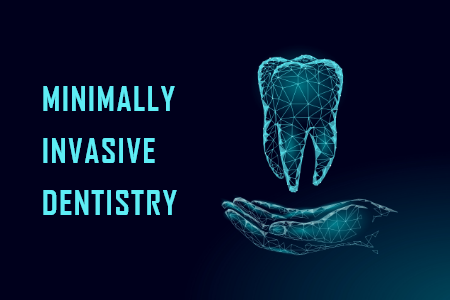
 Everyone wants healthy teeth. Most times, we must take preventative measures to ensure that tooth decay will not run rampant. Bayside Kids Dental in Odenton says this is where Minimally Invasive Dentistry has its chance to shine.
Everyone wants healthy teeth. Most times, we must take preventative measures to ensure that tooth decay will not run rampant. Bayside Kids Dental in Odenton says this is where Minimally Invasive Dentistry has its chance to shine.
They base minimally Invasive Dentistry on the principle of maintaining healthy tooth structure. There are a multitude of procedures that can be performed to get at the root of the problem before the problem ever occurs. Here, we will explore those procedures, and offer clarification on the complex methods behind the process.
The three common methods of Minimally Invasive Dentistry are:
EARLY CAVITY DETECTION
The cavity rate among children has drastically reduced over time with the application of fluoride, but that is only on the surface. This has left roughly ninety percent of cavities (or dental caries) in the pits or fissures of teeth. This is difficult to discover during a clinical examination, so to detect this decay, dentists use radiographs to get a more in-depth look at what they might deal with. However, this method is sometimes inaccurate, which poses a dilemma for dentists: Do they remove tooth structure that appears sound, but may not be? Or do they wait and see if the bacterial decay spreads to the enamel? This decision often leads to a more hands-on, but still minimally invasive approach, where the clinician searches within the fissures with little loss of sound tooth structure.
MINIMAL TOOTH PREPARATIONS
The primary goal of Minimally Invasive Dentistry is to preserve dental tissues without the intervention of materials meant to restore the structure. However, these materials are sometimes necessary. We use sealants in pits and fissures that are likely to suffer decay. When decay is present, a clinician could use what we call a preventive resin restoration, which is a conservative alternative to a large amalgam preparation, which would require more of the healthy tooth structure to be removed to combat the cavity. Through preventive resin restoration, demineralized dentin and enamel is removed and replaced with a resin-based composite, and fissures that are not affected are cleaned and sealed, but not necessarily treated. Clinicians take the age of the patient and their history of tooth decay into account before determining if we should treat unaffected areas.
AIR ABRASION
While the technology was created in the 1940s and used extensively in the 1950s, air abrasion has not been the norm in dental circles for quite some time. But in recent years, the advancements of air abrasion technology has opened new doors for clinicians, and is quickly becoming a preferred method for treating carious dental tissues. Air abrasion removes decaying tooth structure with a stream of aluminum oxide particles that are blasted out with compressed air, or nitrogen gas, or bottled carbon dioxide. These particles strike the tooth at such velocity that they easily break away decaying tooth structure and weakened enamel. The flow rate of the particles varies depending on the air abrasion device being used and is usually painless enough to make the use of anesthetics unnecessary. Once complete, the tooth structure is restored with one of the above-mentioned sealants or resin composites. While a very effective form of treatment, air abrasion is not useful for more serious infections of bacterial tooth decay, making it one of the main staples of Minimally Invasive Dentistry.
Minimally Invasive Dentistry is the favored path to ensure a lifetime of tip-top dental health and preservation of your natural teeth. If you have any questions, bring them up on your next appointment with Bayside Kids Dental.
| Monday | 8:00am - 5:00pm |
| Tuesday | 8:00am - 4:00pm |
| Thursday | 8:00am - 4:00pm |
| Friday | 8:00am - 4:00pm |

1350 Blair Drive, Suite I
Odenton, MD 21113
(443) 698-8180

1350 Blair Drive, Suite I
Odenton, MD 21113
(443) 698-8180
Please call us at (443) 698-8180 or fill out the form below to request an appointment.
"*" indicates required fields



